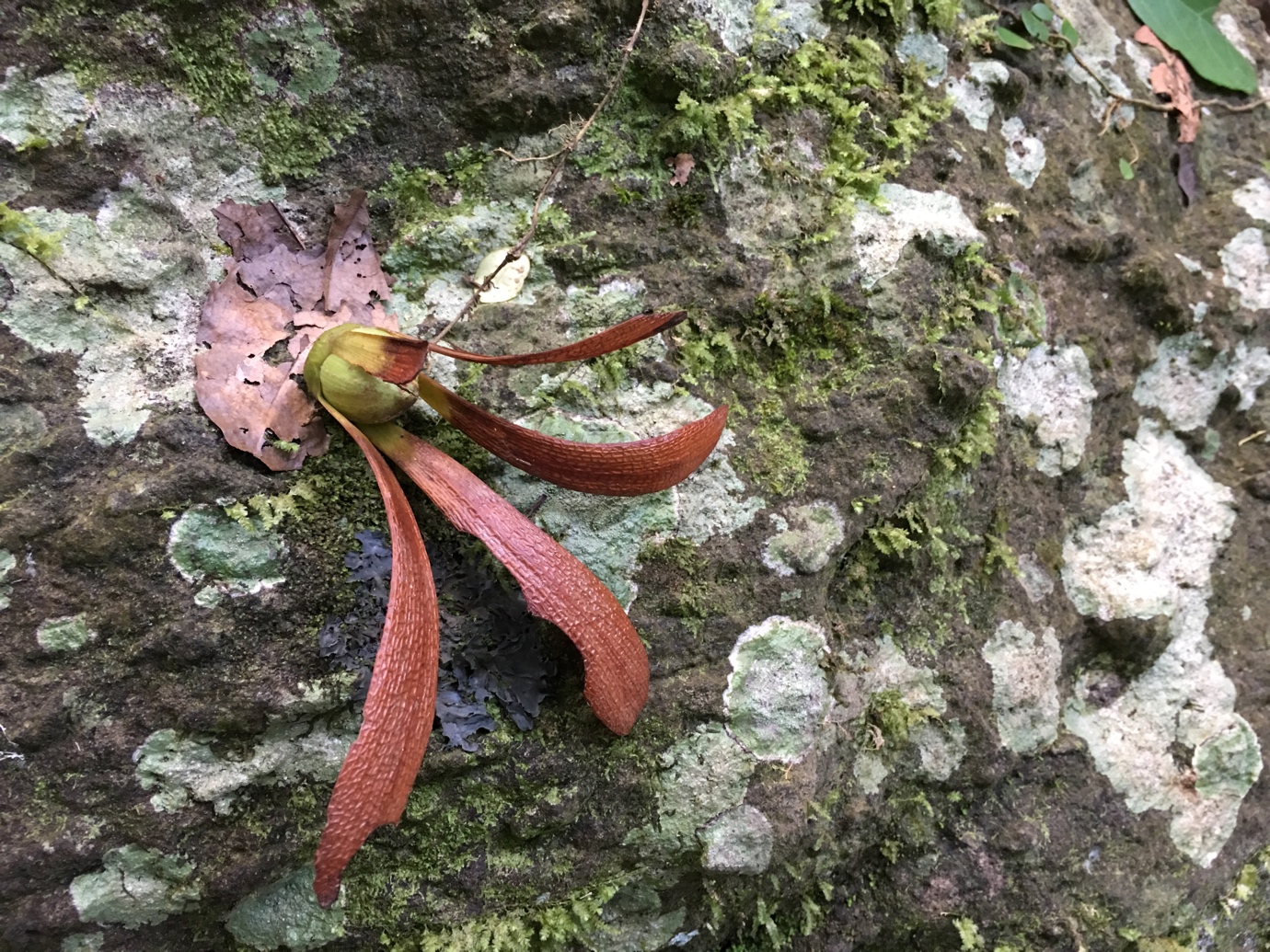Towering as high as 80 metres and forming much of the tropical rainforest canopy in Southeast Asia, dipterocarp trees – or the two-winged fruit tree – are distinguished by their leathery, evergreen leaves, clustered, fragrant flowers, and aromatic resins.
 A winged seed of tropical dipterocarp tree on a fallen tree trunk.
A winged seed of tropical dipterocarp tree on a fallen tree trunk.
Part of the Dipterocarpaceae family, which comprises 16 genera and approximately 700 species, dipterocarp can be found throughout the tropical regions of the world. However, they hit their greatest numbers in the forests of Southeast Asia, specifically Borneo1.
Dipterocarp play an important economic and ecological role, but many species are now endangered. As part of the Earth BioGenome Project (EBP), BGI Group, through its research collaborations, has constructed a high-quality, chromosome-level genome map of Dipterocarpaceae, thereby laying an important foundation for its breeding and protection.
Currently in its fourth year the EBP brings together 44 institutions, including BGI-Research and the China National GeneBank, from 22 countries, with the aim of using genomic sequencing to catalogue and characterize all known eukaryotic biodiversity.
Similarly, BGI’s initiatives to protect and conserve dipterocarp will help protect Earth’s biodiversity, as plants play a fundamental role in natural and human ecosystems. These efforts are also significant as dipterocarp make enormous contributions to the economy, as well as human health and well-being.
The presence of unique fragrant oleoresins – primarily located in the trunks of dipterocarp plants – are a source of bioactive components for the preparation of traditional Chinese medicines. Modern pharmacological and chemical studies also support the potential medicinal value of the fragrant resins of Dipterocarpaceae, since they possess antioxidant, antibacterial, anti-fungi and anti-inflammatory properties2.
Dipterocarp are also in great demand in Asia’s plywood industry given the quality of their timber. Their wood, renowned for durability as well as corrosion- and insect-resistance, is widely used as construction material for bridges, ships and furniture3.
However, many dipterocarp species are now endangered because of overconsumption. The over-exploitation of natural populations and destruction of wild habitats have further resulted in a dramatic decline in their species in past decades4.
Given this deterioration, there is an urgent need to accelerate improvement of the protection and growth of dipterocarp. BGI’s genomics studies in this area serve as an important resource and foundation for future research on the evolution, ecology and conservation of this species and plant life in general.
Reference:
1. https://www.indefenseofplants.com/blog/2017/12/5/dipterocarps
2. https://onlinelibrary.wiley.com/doi/full/10.1111/pbi.13735
3. https://onlinelibrary.wiley.com/doi/full/10.1111/pbi.13735
4. https://onlinelibrary.wiley.com/doi/full/10.1111/pbi.13735



